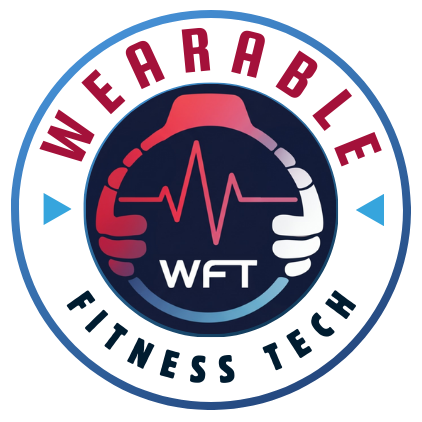
Wearable technology isn’t just another tech fad. It’s become a key player in the world of health and fitness, weaving its way into our daily lives and onto our wrists. Let’s kick things off by understanding what these gadgets are all about. Wearable technology includes smartwatches, fitness trackers, and even smart clothing designed to track health-related data and activities.
These devices evolved from basic pedometers into sophisticated health monitors, thanks to rapid advancements over the past decade. The history of these tech wonders is pretty intriguing, tracing back to the early days of simple step counters. Today, their capabilities range from counting daily steps to monitoring heart rates, sleep, and more.
Considering the current trends, wearables are everywhere, and it feels like everyone has one. Brands like Apple, Fitbit, and Garmin have taken the lead with popular devices that offer various health-monitoring features. Whether you’re looking to monitor your physical activity, illness symptoms, or sleep patterns, there’s a wearable out there to suit your needs.
Why are wearables gaining traction in healthcare, you ask? Well, these nifty gadgets offer unparalleled insights into our health, providing data that can be crucial for diagnosis and management. They turn health information that was once only accessible in a doctor’s office into something you can monitor in real-time. This shift in accessibility empowers individuals to take control of their health journey.
Improving Physical Fitness with Wearables
Wearable tech is like having a personal trainer on your wrist, minus the yelling. These devices can track everything from your steps to the calories you’re burning, making them awesome companions for boosting physical fitness.
Want to count your steps, track your runs, or see how many calories you’re burning while binge-watching your favorite show? Wearables have got you covered. They provide real-time data that helps you understand your activity levels and where you might need to step things up.
Setting fitness goals has never been easier. Wearables allow you to set targets and remind you to get moving if you’ve been a couch potato for too long. They can nudge you into action with reminders and even make goal-setting fun with challenges and achievement badges.
The success stories around wearables are pretty remarkable. Many folks have managed to transform their fitness journeys by using the insightful data these devices offer. Statistics show significant improvements in activity levels and health outcomes for wearable users compared to those going it alone.
But it’s not just about crunching numbers. These tools become motivators and accountability partners, assisting users in maintaining a consistent fitness routine. They provide that gentle push many of us need to stay active day in and day out.
Revolutionizing Chronic Disease Management
Wearables are changing how we handle chronic diseases, offering a new kind of independence and insight. Whether it’s diabetes, heart disease, or any other long-term condition, these devices are proving to be game-changers.
Continuous monitoring is where wearables truly shine. They keep a constant watch over vital signs like heart rate, blood pressure, and glucose levels with non-invasive sensors. It’s like having a mini health clinic tracking your daily wellbeing, minus the bulky equipment.
One of the standout features is early detection and alert systems. These wearables can notice small but significant changes in your body that might signal something’s off. They can send alerts to your phone or even directly to a healthcare provider, giving you a head start on managing any issues.
For those living with chronic health conditions, wearables offer peace of mind and a level of freedom by reducing constant visits to the doctor’s office. They empower individuals by providing real-time data that helps manage symptoms and track the effectiveness of medications or lifestyle changes.
The impact of wearables on conditions like diabetes and heart diseases has been transformative. Devices can predict potential hypoglycemic events for diabetics and monitor irregular heartbeats, offering a world of support that’s both proactive and preventive. So, keeping an eye on your health has gone beyond routine check-ups to a daily, manageable task.
Mental Health: More Than Just Physical
Wearable technology isn’t just about the physical stuff. It’s also playing a big role in mental health, offering new ways to help manage stress and improve overall wellbeing.
Stress management tools in wearables come with features like guided breathing exercises and mindfulness reminders. These prompts can be lifesavers during a hectic day, helping users ground themselves and find calm amid chaos.
Sleep tracking is another major benefit. Good sleep is crucial for mental health, and wearables track sleep patterns to give you insights into your sleep quality. By understanding how you’re sleeping, you can make adjustments to improve both quantity and quality.
Innovation in tackling anxiety and depression has found a new ally with wearables. Some devices offer mood-tracking options or provide gentle nudges to take breaks, practice self-care, or engage in social interactions.
These tools aren’t just about tracking; they’re about understanding and improving your mental health every day. By giving real-time feedback, wearables help users build helpful habits that support mental wellbeing.
Wearables in Preventive Healthcare
Wearables are stepping up as key players in preventive healthcare by helping users identify potential health issues before they become problems. They monitor your body’s daily rhythms and flag anything unusual, which is a huge deal for catching things early.
These devices encourage healthy lifestyle changes in a subtle but effective way. By offering insights into your daily habits, they motivate you to choose the stairs more often, spend extra time in nature, or maybe cut back on that extra soda.
Real-world examples show wearables helping individuals avoid serious health problems like heart diseases or severe obesity. Through consistent monitoring, users become more aware of their health needs and can make informed decisions that positively impact their long-term wellbeing.
By providing detailed feedback, wearables empower you to lead a healthier lifestyle, setting you on a path to not just react to health issues but actively prevent them. They move everyday health management into your hands, making it a natural part of your daily life.
User Privacy and Ethical Considerations
Data privacy is a hot topic, especially with wearables collecting so much personal data. Users rightly worry about who has access to their health information and how it’s being used.
Many wearable tech companies are addressing these concerns by implementing stricter data security measures. They’re focusing on encrypting data and providing users with more control over what’s shared and with whom.
Finding a balance between innovation and ethical responsibility is a challenge, but it’s essential. Companies must ensure that advancements in health monitoring don’t come at the expense of user privacy.
Future implications for data security and user consent are wide-ranging. As technology evolves, so do the guidelines and practices that protect user information.
It’s important for users to stay informed about their rights and the data practices of the wearables they choose to use, ensuring they’re not just healthier, but also safer.
The Future of Wearable Health Technology
Emerging technologies in wearables are opening up new possibilities for health monitoring, from advanced biometrics to even smarter algorithms that predict health events before they happen. The potential here is huge, aiming to make healthcare even more personalized and proactive.
Integration with other healthcare innovations is on the horizon. Imagine wearables syncing seamlessly with electronic health records, telemedicine platforms, or even directly with healthcare providers for real-time health management. This kind of connectivity could revolutionize how healthcare services are delivered, making them more efficient and tailored to individual needs.
These exciting advancements come with their fair share of challenges, though. Technical issues, cost considerations, and ensuring accessibility across different demographics can pose hurdles. Overcoming these barriers will require collaboration between tech developers, healthcare professionals, and policymakers.
As we look to the future, the opportunities for improving health via wearables are vast. With continued innovation and a focus on user-centric solutions, the next generation of wearables will likely offer even greater insights, empowering individuals to take charge of their health in unprecedented ways.
